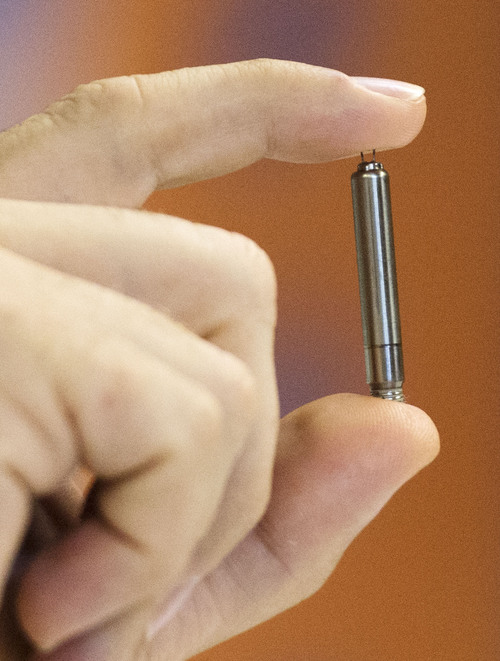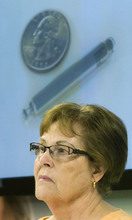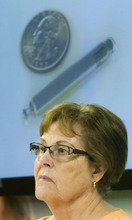This is an archived article that was published on sltrib.com in 2014, and information in the article may be outdated. It is provided only for personal research purposes and may not be reprinted.
A Logan woman and her cardiologist said Monday that a new, small pacemaker that keeps her heart beating steadily was implanted without surgery two weeks ago at Intermountain Medical Center in Murray.
Susan Thomas, 72, became the first patient in Utah to receive the new pacemaker, a Nanostim pacing device.
The pacemaker is in clinical trials and has not yet been approved by the Food and Drug Administration. Intermountain is seeking other candidates who want to participate.
But Thomas is already a fan.
Thomas said she was in the hospital overnight and went to Flaming Gorge with her family a couple days later.
Two weeks later, she has more energy. "I'm able to get around better," she said. "I can stand up for the most part without being dizzy. It's just been a lifesaver. I know it's there, but I really don't even feel this. It's just part of my body now."
The study began in February, and has enrolled 121 people so far in about 50 locations in the United States and Canada. It continues until next June.
"This is the smallest pacemaker that is available for human use," said cardiologist Jared Bunch, of Intermountain Medical Center. "Instead of making an incision or doing surgery in the chest, this is advanced through a vein up into the heart and then it screws into the heart."
Traditional pacemakers are implanted during surgery below the collar bone and attached to muscle. Connected wires are threaded into the heart to deliver electric stimulation.
Those wires, or leads, are the most challenging component of most pacemakers, Bunch said. The Nanostim eliminates the need for them.
The new pacemaker is smaller than a AAA battery, less than 10 percent the size of a typical pacing device.
Surgeons insert it via a catheter in a vein near the groin. Once it is implanted in the right ventricle, the catheter is removed. The patient is put under anesthesia but receives no stitches.The Nanostim, developed by St. Jude Medical Inc., is wireless and communicates remotely with a computer in the hospital that allows doctors to monitor or change the strength and frequency of the electric shocks.
The device is 90 percent battery and its life depends on how often it's used. If it paces 25 percent of the time, it will last about 18 years, Bunch said. If it paces 100 percent of the time, it will last only 10 to 12 years.
Existing pacemakers typically last that long, said Ravi Ranjan, a cardiologist at the University of Utah. More than 95 percent last more than 10 years, he said.
Ranjan said the new device is "niche technology" because the number of patients who would benefit from Nanostim is small compared to the number of people who need a pacemaker.
One of its limitations is it can pace only one chamber. Ranjan said 80 to 90 percent of patients need a dual-chamber pacemaker.
The device has previously been available in Europe through its first trial, which enrolled 33 patients.
A similar device, Micra Transcatheter Pacing System, developed by Medtronic Inc., also is in clinical trials in the United States and Europe.
Anyone interested in enrolling in the trial at Intermountain Heart Institute can call Jared Bunch or Jeff Osborne at Intermountain Medical Center at 801-507-3513.









